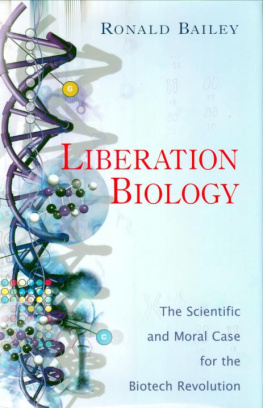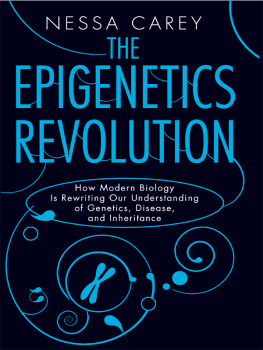Quote taken from the e-biomed home page, http://www.liebertpub.com/ebi/defaulti.asp .
For the application of genomics to the study of the mind, see Anne Farmer and Michael J. Owen, Genomics: The Next Psychiatric Revolution?, British Journal of Psychiatry 169 (1996): 135138. See also Robin Fears, Derek Roberts, et al., Rational or Rationed Medicine? The Promise of Genetics for Improved Clinical Practice, British Medical Journal 320 (2000): 933995; and C. Thomas Caskey, DNA-Based Medicine: Prevention and Therapy, in Daniel J. Kevles and Leroy Hood, eds., The Code of Codes: Scientific and Social Issues in the Human Genome Project (Cambridge, Mass.: Harvard University Press, 1992).
For an overview of this debate, see Frans de Waal, The End of Nature versus Nurture, Scientific American 281 (1999); 5661.
Madison Grant, The Passing of the Great Race; or, the Racial Basis of European History, 4th ed., rev. (New York: Charles Scribners Sons, 1921).
Jay K. Varma, Eugenics and Immigration Restriction: Lessons for Tomorrow, Journal of the American Medical Association 275 (1996): 734.
See, for example, Ruth Hubbard, Constructs of Genetic Difference: Race and Sex, in Robert F. Weir and Susan C. Lawrence, eds., Genes, Humans , and Self-Knowledge (Iowa City: University of Iowa Press, 1994), pp. 195205; and Ruth Hubbard, The Politics of Womens Biology (New Brunswick, N.J.: Rutgers University Press, 1990).
Carl C. Brigham, A Study of American Intelligence (Princeton, N.J.: Princeton University Press, 1923).
For an argument for the continuity between biology and culture, see Edward O. Wilson, Consilience: The Unity of Knowledge (New York: Knopf, 1998), pp. 125130.
Margaret Mead, Coming of Age in Samoa: A Psychological Study of Primitive Youth for Western Civilization (New York: William Morrow, 1928).
Donald Brown, Human Universals (Philadelphia: Temple University Press, 1991), p. 10.
Nicholas Wade, Of Smart Mice and Even Smarter Men, The New York Times , September 7, 1999, p. F1.
Matt Ridley, Genome: The Autobiography of a Species in 23 Chapters (New York: HarperCollins, 2000), p. 137.
Luigi Luca Cavalli-Sforza, Genes, Peoples, and Languages (New York: North Point Press, 2000), and, with Francesco Cavalli-Sforza, The Great Human Diasporas: The History of Diversity and Evolution (Reading, Mass.: Addison-Wesley, 1995).
Genetic factors have also been said to play a role in alcoholism. See C. Cloninger, M. Bohman, et al., Inheritance of Alcohol Abuse: Crossfostering Analysis of Alcoholic Men, Archives of General Psychiatry 38 (1981): 861868.
Charles Murray and Richard J. Herrnstein, The Bell Curve: Intelligence and Class Structure in American Life (New York: Free Press, 1995).
Charles Murray, IQ and Economic Success, Public Interest 128 (1997): 2135.
Arthur R. Jensen, How Much Can We Boost IQ and Scholastic Achievement?, Harvard Educational Review 39 (1969): 1123.
See, passim, Claude S. Fischer et al., Inequality by Design: Cracking the Bell Curve Myth (Princeton, N.J.: Princeton University Press, 1996).
Robert G. Newby and Diane E. Newby, The Bell Curve: Another Chapter in the Continuing Political Economy of Racism, American Behavioral Scientist 39 (1995): 1225.
Stephen J. Rosenthal, The Pioneer Fund: Financier of Fascist Research, American Behavioral Scientist 39 (1995): 4462.
On testing more broadly, see Nicholas Lemann, The Big Test: The Secret History of the American Meritocracy (New York: Farrar, Straus and Giroux, 1999).
Francis Galton, Hereditary Genius: An Inquiry into Its Laws and Consequences (New York: Appleton, 1869).
Karl Pearson, National Life from the Standpoint of Science, 2d ed. (Cambridge: Cambridge University Press, 1919), p. 21.
Stephen Jay Gould, The Mismeasure of Man (New York: W. W. Norton, 1981).
Leon Kamin, The Science and Politics of IQ (Potomac, Md.: L. Erlbaum Associates, 1974).
Richard C. Lewontin, Steven Rose, et al., Not in Our Genes: Biology, Ideology, and Human Nature (New York: Pantheon Books, 1984). For a discussion of this debate, see Thomas J. Bouchard, Jr., IQ Similarity in Twins Reared Apart: Findings and Responses to Critics, in Robert J. Sternberg and Elena L. Grigorenko, eds., Intelligence, Heredity, and Environment (Cambridge: Cambridge University Press, 1997); and Thomas J. Bouchard, Jr., David T. Kykken, et al., Sources of Human Psychological Differences: The Minnesota Study of Twins Reared Apart, Science 226 (1990): 223250.
Robert B. Joynson, The Burt Affair (London: Routledge, 1989); and R. Fletcher, Intelligence, Equality, Character, and Education, Intelligence 15 (1991): 139149.
Robert Plomin, Genetics and General Cognitive Ability, Nature 402 (1999): C25C44.
See, inter alia, Howard Gardner, Frames of Mind: The Theory of Multiple Intelligences (New York: Basic Books, 1983); and Multiple Intelligences: The Theory in Practice (New York: Basic Books, 1993).













